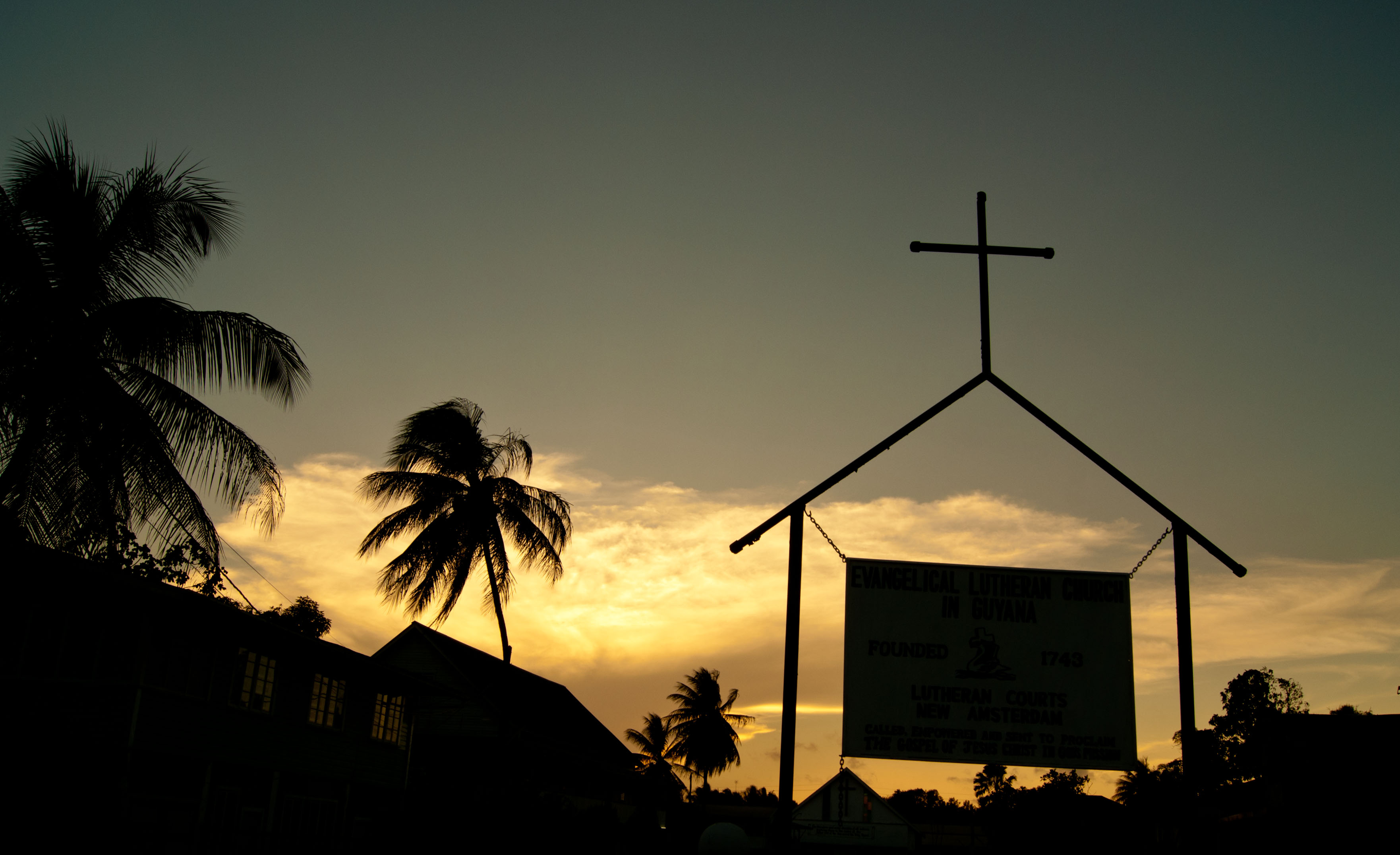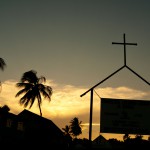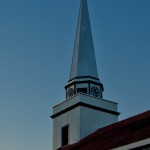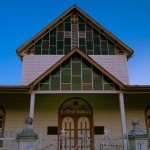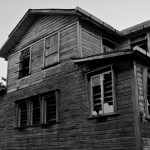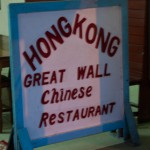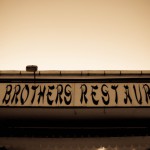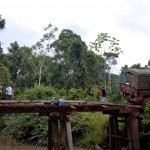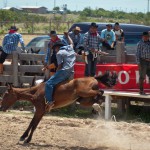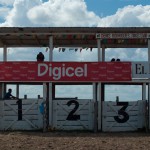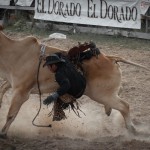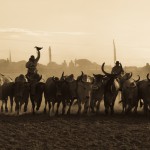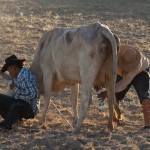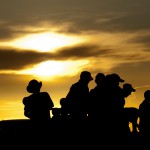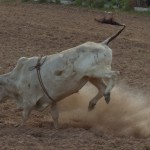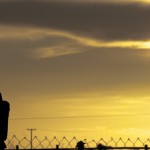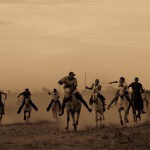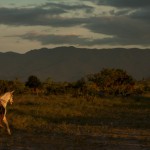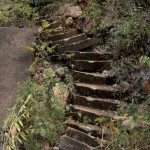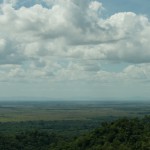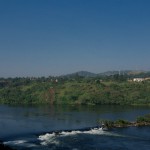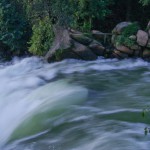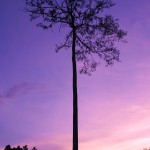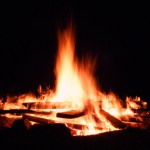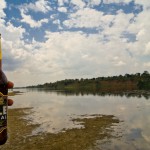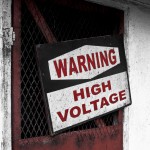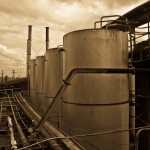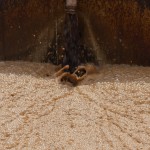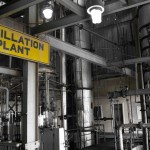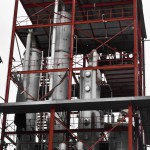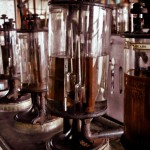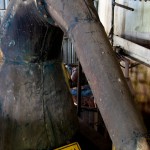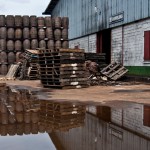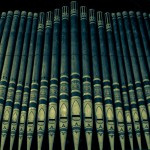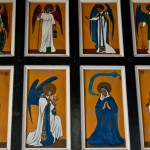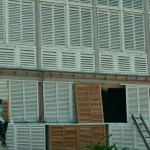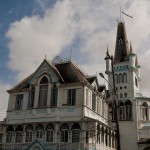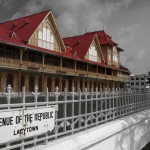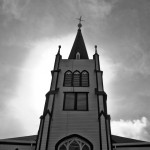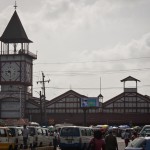“Every morning in Africa, a gazelle wakes up.
It knows it must run faster than the fastest lion or it will be killed.
Every morning in Africa, a lion wakes up.
It knows it must outrun the slowest gazelle or it will starve to death.
It doesn’t matter whether you are a lion or a gazelle.
When the sun comes up, you’d better be running!”
1. Masai Mara

The crème de la crème of safaris, the Masai Mara offers what is commonly (and incorrectly) know as the annual wildebeest migration. This migration is far from an annual occurrence and is in fact the continuous movement of thousands of wildebeest back and forth across the Kenyan and Tanzanian plains in search of the proverbial greener pasture. Around August the wildebeest get to the Masai Mara River and if you’re lucky, you witness a blood fest. Hungry starving crocodiles lie in wait and the lions not to be outdone silently stalk the herds of wildebeest, preying on its weakest members. Most safaris pale in comparison to this mega event.
2. Amboseli National Park
This is the only safari that comes even close to competing with the Masai Mara for postcard space. With Kilimanjaro in the background and tons of elephants, giraffes and lions in the park, pictures don’t get more iconic than this. Standing at almost 6000m above sea level, Kilimanjaro is the tallest freestanding mountain in the World and the tallest mountain in Africa. As can be expected, tall mountains don’t like to be spotted unless the weather Gods say so. Patience (something I lack) is the key to this Kodak moment.
3. Hells Gate

The only bicycle safari in East Africa. There’s no feeling as liberating as hopping on your bicycle and riding out on a safari. Despite the morbid name, Hells gate is (relatively) safe with no predatory animals around. Warthogs, zebra, giraffe and the odd wildebeest are scattered around the park. A gorge at the center offers a scenic trek through volcanic springs. Steam coming out of the geysers contributed to this park’s unconventional name.
4. Ngorongoro Crater

The Ngorongoro Crater was formed when a giant volcano, about the size of Kilimanjaro, erupted and collapsed on itself. With plenty of water and vegetation, the crater is a feeding paradise for grazing animals. And where there are grazing animals, there are predators. Hippos, zebra, lions, hyenas – this crater has it all. The only animal missing out on the feeding extravaganza is the giraffe. Bony long rickety legs might be ideal for reaching the high hanging fruit, but not so much with steep slopes. This whole mini-ecosystem hangs in perfect balance and you can’t help but marvel at the circle of life.
5. Lake Nakuru

As Kenya’s premium national park, entrance is priced at a hefty 50$ for non-residents. The park is well maintained and quite small in comparison to the other parks. This means that animals can no longer remain hidden for too long. So this is where you get to spot rhino – definitely the hardest of the big 5 (rhino, elephant, buffalo, lion, leopard) to find. If you’re lucky you’ll see both white and black rhino. While white rhino are relatively unperturbed with human company, black rhino are very aggressive and would topple a vehicle without batting an eye. Fortunately, they prefer to shy away from the spotlight and usually avoid noisy annoying tourists.
6. Aberdare National Park

If you’re looking for a novelty safari, this is the place to be. The Ark is a hotel located in the middle of Aberdare National Park. Shaped as a boat and named after Noah’s legendary exploits, this hotel is located right next to a salt field and watering hole. Animals drop by at various times to drink water or lick salt off the ground. Floodlights and glass walled galleries offer a close up view of exotic animals that drop by for a salt fix. Buzzers in the rooms wake you up in the middle of the night when the more elusive animals (leopard, rhino, etc) show up.
7. Lake Manyara

Lake Manyara is home to the famous tree-climbing lions. The southern Serengeti in Tanzania is the only place in the world where lions climb into the trees. While no one knows for sure why the lions climb into the trees, one theory has it that the lions started climbing into the trees to get away from the nasty tse-tse flies.
8. Lake Bogoria

One of the lakes along the Great Rift Valley, Lake Bogoria is home to one of the World’s largest populations of lesser flamingos. The birds feed on a certain algae that grow in only highly alkaline water. The volcanic Lake Bogoria offers perfect conditions. This National Park also boasts of the highest concentration of geysers in Africa.
9. Tarangire National Park

Huge baobab trees are scattered throughout the park. Rumored to be oldest tree on Earth, this is hard to prove since the tree doesn’t produce rings that allow us to verify its age. The oldest baobab is estimated to be 6000 years old. With the land drying out during the summer months, the Tarangire River is a lifesaver for all the animals. Elephants have colonized huge stretches. A few birds prefer to take a dip and then bask in the sun.
10. Nairobi National Park

Anyone familiar with East Africa would wonder why this was included in my list. Other than lion, giraffe, water buffalo and other regulars, the Nairobi National Park doesn’t match up to the likes of the Masai Mara. However, how many cities have it’s own National Park and safari? None I’m guessing. For a city of 3 million, a National Park in your backyard is a huge achievement. The co-existence of man and animals is a reality here. Other attractions include giraffe feeding, the elephant orphanage and a zoo.
Do you think any other safari should be included in this list? Let me know..
The only African Country not to be colonized, Ethiopia is a mystical land where ancient traditions and customs have been preserved to the present day. Stepping into the land of burnt faces (yep – that’s what ‘Ethiopia’ means) you quickly realize that despite Addis being the largest city in East Africa there’s something that separates this big city from any other big city. Addis still retains the exotic flavors of Ethiopia.
Tomoca
Breakfast would call for a caffeine fix and this would take you to a tiny little café well know among the locals for its excellent brew. The smell of the coffee here is guaranteed to convert non-believers and a sip will have them hooked for life. Try and not let your jaw hit the floor when you’re charged only 5 Birr (16 Birr = 1 USD) for a macchiato.
St. George’s Cathedral
St. George is a popular lager brewed in Ethiopia. Incidentally, there’s a Church bearing the same name as well. St. George’s Cathedral is octagonal with 3 main sections. The outermost is for worshippers with the men’s section separated from the women’s section. The mid section is meant for the distribution of communion on Sundays while the central portion is the ‘holy of holies’ meant only for priests and deacons. The walls of the ‘holy of holies’ boast of paintings of famous Ethiopian artists. The Church was burnt down by the Italians in the early 20th Century and subsequently restored.
Holy Trinity Cathedral
The Holy Trinity Cathedral is memorable for its numerous, beautiful stained glass windows all around the Church. Depicting scenes from the Bible these works of art look stunning at mid-day when the interior of the Church is illuminated only with the sun streaming through these stained glass mosaics. The Church is decorated on the outside with intricately carved figures of Angels and adorned with 2 gigantic domes. The crypt of the Church holds the tombs of Emperor Haile Selaise and his wife Empress Menan Asfaw that are set within huge granite stones armed with gigantic lion paws at the bottom.
Addis Ababa Restaurant
Hidden right next to the Piazza is the Addis Ababa Restaurant. Not much to look at from the outside, one you walk through the doors it feel like you’ve travelled back in time to what could possibly have been the 1950s. The ambience is as authentic as it gets and trying the home brewed ‘tej’ or honey wine is a must. If you’re a fan of Ethiopian food, this place is just what the doctor ordered. If not, you’ll be on a diet of bread and butter during your entire stay in Ethiopia. McDonalds has yet to chalk out an entry strategy.
Merkato
Branded the largest open-air market in Africa, this market doesn’t have much to offer (for the regular tourist). As you can imagine, it is a huge market targeting ordinary citizens with regular boring stuff ranging from furniture, to PUAM shoes (make no mistake) to 5$ fake jeans. Of course holding onto your wallet with one hand and your cell phone with the other to deter pickpockets doesn’t give too much room to improvise on the shopping front. Walking through the narrow dusty streets is quite interesting but not as revelatory as expected.
National Museum
The museum is renowned for its Lucy exhibit. “Lucy” was found in Ethiopia and is the 4 million old fossilized remains of one of the earliest primates to walk upright on 2 feet. This museum’s collection ranges from a stereotypical broken pottery exhibit, to a relatively more thought provoking sketch of an early man. The lack of a museum coffee shop is conspicuous.
Ethnological Museum
All taxi drivers will tell you that this museum does not exist. Don’t believe them. Fight with them if necessary and get a ride to Addis Ababa University. Hidden in the midst of this old campus and housed within none other than Emperor Haile Selassie’s palace is the Ethnological museum. Segmented based on the stages of life, this museum sets out to introduce the various tribes of Ethiopia by describing tribal stories relating to birth, then working its way through adulthood, marriage and finally culminating in death. There is a section which may as well be classified the ‘looted by the British’ section since it only contains pictures of artifacts (you guessed it) looted by the British.
Habesha
Once you’re done with exploring the city during the day, there’s no better way to kick back and relax than with a glass of tej at Habesha. Located in the centre of Addis, the restaurant offers seating under a massive tent. Don’t let the Ethiopian version of Stevie Wonder distract you from the food. The injera and ribs here are awe-inspiring and leave you with no doubt as to why this place is branded the best Ethiopian restaurant in Addis.
New Amsterdam is one of Guyana’s largest towns. It comprises of 3 main roads parallel to each other with numerous tiny streets linking these roads. The town is 3kms long and half a kilometer wide with a population of around 30,000.
The largest industry here is Christianity. Main Street boasts of 8 churches – Lutheran, Roman Catholic, Anglican and even Ethiopian Orthodox to name a few. Even though some of these Churches date back to the 19th century, it is a bit disappointing that none of them are worth writing home about. Given the popularity of Churches, it was ironic that Church View Hotel (where I spent the night) was located bang across the only Mosque in town.
Church hopping helps you build up quite an appetite and the (always) enterprising Chinese community stepped in to fill that gap. They might’ve taken it a bit to far. Chinese restaurants are second only to Churches by number. From the swanky and suspiciously quick Sue Brothers to the not so well informed Hong Kong Great Wall restaurant, your Chow Mein craving will not go unsatisfied.
Apart from Churches and Chinese restaurants, there’s absolutely nothing to do here. Local youth, presumably bored from the lack of entertainment carted a few speakers onto the road and turned up the volume. Armed with beers, a small crowd gathered to investigate. In line with Guyanese tradition, no song was allowed to play for longer than a minute. If that wasn’t bad enough, the DJ refused to let any song play uninterrupted for 10secs – saying something incomprehensible (I’ve got to work on my Creolese) on the mic.
The most memorable part of a trip to New Amsterdam is definitely the mini-van ride. From the music to the conductor to the interactions between passengers – it’s all so refreshingly different from everywhere else in the world that if you can get past the crazy driving, you might actually enjoy the flavor of Guyana that gets served up to you here. However, if you do end up waking up early and think of catching a 5$ bus from Georgetown to New Amsterdam, I would highly recommend suppressing that feeling of irrational impulsiveness. Although New Amsterdam is one of the Guyana’s largest towns, it’s definitely not built to be a tourist destination.
As a tiny town in southern Guyana bordering Brazil, Lethem’s claim to fame is the annual Easter rodeo. With everyone in Georgetown talking only about the rodeo in the weeks leading up to Easter, I was left with little choice but to board a bus to Lethem.
500kms separates Georgetown from Lethem – 400 of which is mud. It doesn’t end there. Once you’ve resigned yourself to the fact that your vehicle will periodically get stuck in wet mud, you then have the bridges to contend with. Please note that these are no ordinary bridges. Made entirely from wood, they have a tendency to crumble under the weight of passing trucks. Bet the engineer didn’t see that one coming. Even after making allowances for these distractions, 30 hours to cover 500kms is shocking and a backbreaking experience.
Putting the horrible roads aside, the constantly changing landscape is breathtaking. Coastal vegetation slowly gives way to wet, untarnished and dense rainforest – the jaguar’s playground. Driving into southern Guyana, the forest seamlessly makes way for the savannah. And what a sight that is! Grass all around extending until the horizon, dotted with anthills and without a tree in sight. An anteater’s paradise.
The annual Easter rodeo features a blend of Guyanese and Brazilian cultures with some Jamaican music thrown in for good measure. Entertainment for the weekend includes wild horse riding, wild bull riding, wild cow milking, greasy pig catching and greasy pole climbing among other attractions. All this under the scorching sun. Something about watching grown men foolishly attempt to ride wild animals and then fail miserably makes for a great afternoon. Nightfall sees the music being cranked up to keep pace with the drunken celebrations.
Moca Moca waterfalls fall into the rocky stream rather than gigantic waterfall category. Huge pools of water and large rocks encourage cannonballs. Picture this for a lazy Sunday afternoon – sitting by the edge of a creak bathing in sunlight diffusing through tall trees and your legs immersed in cold stream water. Perfection would require a cold beer. Maybe next time. Not so sure why anyone would leave all this behind to climb 1000 stairs to the top of a mountain, braving the sun and risking drowning in your own sweat. The ‘peak’ (for lack of a better word) offers a spectacular view of the savannah and a few green hills. However, the intense heat makes the waterfall preferable.
A trip to Lethem should be on the cards of any tourist in Guyana. While the rodeo may not be around the rest of the year – a stop at the Iwokrama forest for a canopy walk or a dash across the border into the Brazilian towns of Bom Fin and Boa Vista seem like reasonable alternatives. Caiperinjas anyone?
 The Nile has 2 tributaries – the White Nile and the Blue Nile. The Blue Nile originates at Lake Tara in Ethiopia. The source of the White Nile has not yet been located but is believed to be hidden in the mountains of Uganda and Burundi. We managed to catch up with this legendary river at Jinja in Uganda.
The Nile has 2 tributaries – the White Nile and the Blue Nile. The Blue Nile originates at Lake Tara in Ethiopia. The source of the White Nile has not yet been located but is believed to be hidden in the mountains of Uganda and Burundi. We managed to catch up with this legendary river at Jinja in Uganda.
Landing at Kampala airport, our guide, Herbert declared that out 120km journey to the Jinja camp would take us 3.5 hours by (mud) road. With 7 people packed into Herbert’s car, we were pretty cozy. 2 bottles of wine and a six-pack of beer later, Herbert began to doubt whether 75 USD was worth the trouble.
Day 1 on the Nile
Breakfast took us to a bar that offered us a breathtaking view of the Nile. Words and pictures will not do that scene justice. Although bungee jumping into the water didn’t seem prudent at the time, in retrospect it does seem like a missed opportunity. And so we prepared to make our journey through – the Donald Duck, Dead Dutchman, hair of the dog, 50-50, Bad Place, the Other Place and the mighty Silverback over the next 2 days. Armed with a paddle, lifejacket, helmet and our trusty raft – we were all set to tame the Nile.
Going into the details of all rapids will bore you since my recollection of most rapids is the same. They all started off with a loud sound of water gushing in the distance that grew louder as we paddled. This effect encouraged us (and this could possibly be only me in some cases) to stop paddling. The loud sound was gradually replaced by a feeling of dread, an ‘I’m too young to die’ emotion and a few butterflies in the stomach. The urge to live was the only reason we followed our guide’s counter-intuitive instructions to paddle as hard as possible. Then came the call to get down. I can only guess that an external observer would’ve seen paddles flying all over the place and 7 people scrambling to get their rear ends as close to the bottom of the boat as possible. We escaped the first few rapids with no casualties and only our hearts beating loud enough to drown (no pun intended) the sound of the flowing water.
Although we survived (and you’ll hear me using this word a lot because that’s what each rapid felt like) a grade 5 rapid and a 13-foot (precise approximation) waterfall, the most memorable rapid of theday would be the last series of rapids. In order to get to ’50-50’, we were required to paddle past ‘The Bad Place’. Sadly, this was not meant to be. We ended up on the border of the two rapids andfound out what clothes in a washing machine must feel like. Nick soon found himself spitting in the face of death if we go by his recollection of the event. Elizabeth met the same fate as Nick at ‘The Other Place’.
It was not without considerable joy that we spotted camp and rowed towards the shore to mark the end of day 1. I must mention that rafting causes food and beer to taste like manna from heaven. We saw out the last bit of daylight by hiking to a rock that overlooked the scariest rapid I have ever seen. It didn’t take stories of fools who dared to make me decide that I would never try something like that. Without electricity and with light fading at 6pm, alcohol seemed like the only viable solution. There’s something about a bonfire (even on a warm summer night) that makes a camping trip even more enjoyable. Sleep came quickly as a well-earned reward.
Day 2 on the Nile
All residual feelings from the previous night were quickly overpowered with a massive breakfast; one of the best I’ve had in Africa – bacon, eggs, hash browns, toast, etc. All this at a place that didn’t have electricity. Reunited with our faithful gear, we put on brave faces as we paddled away from camp.
The first rapid of the day saw my dry streak end. Landing in turbulent water with a raft placed firmly on top of you is not an ideal situation to find yourself in. The lifejacket seemed to have a mind of its own as it pinned me against the bottom of the boat. 5 seconds of intense panicking later, I managed to resurface and our trustworthy guide gave me a hand back into the raft.
Next came the mighty grade 5 Silverback that flipped the raft. Surprise surprise!! Some of our less adventurous crew sat that rapid out and could barely suppress grins claiming that our wipeout would’ve made a killer youtube video. Big wave number one saw the boat show up with 2 occupants missing (yours truly being one of them). The boat then disappeared behind huge wave number 2 and showed up with only our Kiwi guide and his Aussie friend clinging on for dear life. Massive wave number 3 ensured that only an overturned boat resurfaced. The yellow helmets bobbing in the water helped the rescue kayaks round up the scattered herd.
Rattled, we made our way through the next stretch of calm water attempting to digest half the Nile that we’d just drunk. It finally got too hot in the boat and we cooled off by jumping right in and navigating the next rapid on our backs, feet up and butt cheeks clenched. We all survived without incident. The last rapid saw an upstream current meeting a downstream current and this ensured that the boat wasn’t pushed in either direction and was instead just violently tossed up and down. I’m convinced that this would be what a rodeo clown riding a bull must feel like. It was fun! We repeated this 3 times and managed to get stuck on this wave the third time. Throwing a man overboard helped us get unstuck. Next came the body boards where we jumped from the bank and paddled into this wave, attempting to ride it.
That marked the end of the rafting. It felt amazing to sit back in the van, enjoy a beer and recall what we’d been through in the last 2 days. We then drove through a few villages, ducking constantly to avoid tree branches taking violent swings at us through the open van. Children rushed to the passing van, each one of them waving and yelling ‘how are you?’ Despite the horrible roads, it was a great drive since we managed to get a glimpse of the beautiful Ugandan countryside.
Objective – To produce the best rum in the World
Ferment > Distil > Age > Consume
Stage 1 – Ferment

Input – yeast, molasses, water
Equipment – huge vats and lots of large pipes (preferably intertwined in a complicated manner)
Procedure
- Grow yeast in huge vats by maintaining perfect conditions for replication. Mood music not necessary. Estimated time – 6 hours.
- Mix yeast with molasses and water.
- Throw in anti foaming substance for good measure. Add sulfuric acid to taste. Keep temperature below 37 degrees.
- Leave the mixture alone for 24 hours.
Output – Carbon dioxide and dead wash
Stage 2 – Distil

Input – dead wash and steam
Equipment – Stills, condensers, pipes, glass beakers, pipettes and log books
Procedure
Equipment – Stills, condensers, pipes, glass beakers, pipettes and log books
Procedure
- Transfer the dead wash from fermenting plant into huge cylindrical stills while blowing steam through these stills to vaporize the dead wash. These fumes are then converted into pure alcohol in the condenser.
- Different stills give flavors to the alcohol. Coffey, wooden and pot stills are some still options.
- Mad scientist equipment helps staff monitor the consistency of the alcohol.
- Once the alcohol has been extracted, dump all waste into the river*. Don’t let your conscience bother you about that. The law sure as hell won’t.
Output – 18 different alcohol varieties with varying consistencies, compositions, flavours and colours.
Stage 3 – Age

Input – pure alcohol from stage 2
Equipment – Wood, iron, rain, sunshine
Procedure
Equipment – Wood, iron, rain, sunshine
Procedure
- Mix different quantities of different rums to produce a rum blend. Adult supervision required.
- Build a casket from the wood using iron clamps and leave it out in the rain for a few days to ensure that the wood absorbs water and binds together well.
- Air pressure test the cask before sealing blended rum in it for up to 80 years in some cases. Your kids will thank you for your patience.
Output – The world’s best rum
Stage 4 – Consume

Conclusion – Demarara distilleries produces 20,000 bottles of rum per day. The warehouse unit houses more than 36,000 caskets of rum. El Dorado 5 year rum is the best rum in the below 7 year category and has won that award over the last 7 years. El Dorado 15 year rum is the best rum. Period. Our friendly neighbourhood rum connoisseur observed (and I concur) that the following mapping holds true for good rums
- 21 years = cognac
- 15 years = scotch
- 12 years = brandy
- 6 years = vodka
- 5 years = tequila
- 3 years = rum rum
* The distillery has opened a new bio gas plant next door to the distillery and is using its waste to generate bio fuel to power the distillery. The CO2 released from the fermentation is used to make dry ice and Pepsi. Although these practices are somewhat sustainable, the brown waste flowing into the river shows that this token effort isn’t enough and there’s a lot of work to be done on this front.
On landing at the Cheddi Jagan International airport in Guyana, the Calypso playing on the speakers sets the expectations right. Georgetown may be part of South America but make no mistake – you’re in the Caribbean!!
First Glance
Georgetown stands a good chance of being the world’s laziest city (if it can be called a city). With a population of 200,000 the roads are relatively empty and traffic rules non-existent. 200 years of colonial mud-slinging between the British, French, Portuguese and Dutch has given Georgetown a more than colorful history. The eclectic mix of churches and buildings dotting the town bear witness to that. Like most of the buildings around, my guest house is built completely from wood. Living on the 2nd floor of a rickety wooded building rocks. Literally. Somewhere in the house a door slams shut and the entire building seems to shake on its foundation (if any).
The Best Part
The 45km drive from the airport to Georgetown offers an intoxicating scent of both rum and beer distilleries which are part of Guyana’s largest industry (sugarcane – rum…same thing). Guyana’s rum – El Dorado has brought home numerous awards for one of the world’s best rums. Even more reason to not complain about rum being cheaper than Coke in these parts. Did you know that Guinness brews its beer in Georgetown?? A tour of the rum distillery is battling the Kaieteur falls (world’s largest single drop waterfall) for top spot on my tourist agenda.
Lifestyle
Music’s in the air at all points in time right from the street CD vendors to food stalls to passing vehicles. People even seem to sing as they speak. Seems fitting for the Caribbean. This musical passion is possibly overshadowed by only one other countrywide obsession – cricket. With the world cup going on, the only thing playing on all televisions is repeats of older cricket matches. Even though the West Indies were knocked out in the quarterfinals, people still seem interested. Random people were hugging each other at a local food court when India won the World Cup. Didn’t seem to make any sense. I think I’m going to like it here.
Cost of Living
a) Beer – USD 1.5 at posh places and USD 1 at local bars
b) Call a cab – USD 1.5 from anywhere to anywhere
c) Cab off the street – USD 2 from anywhere to anywhere (don’t ask why)
d) Rum – USD 4-5 per bottle
e) Big night out – USD 15 (including dinner)
f) Big Mac – dream on
The Downside
Hot water showers are a rather elusive commodity here and can only be found at the swankiest hotel in town. Regular mortals and underpaid volunteers have to suck it up and jump into moss ridden cold showers. Wireless internet made it’s way to Georgetown just fine, but somehow washing machines didn’t.
Right now – belly full behind drunk*. Time for some shut eye.
*Local proverb: eat + drink = laziness










